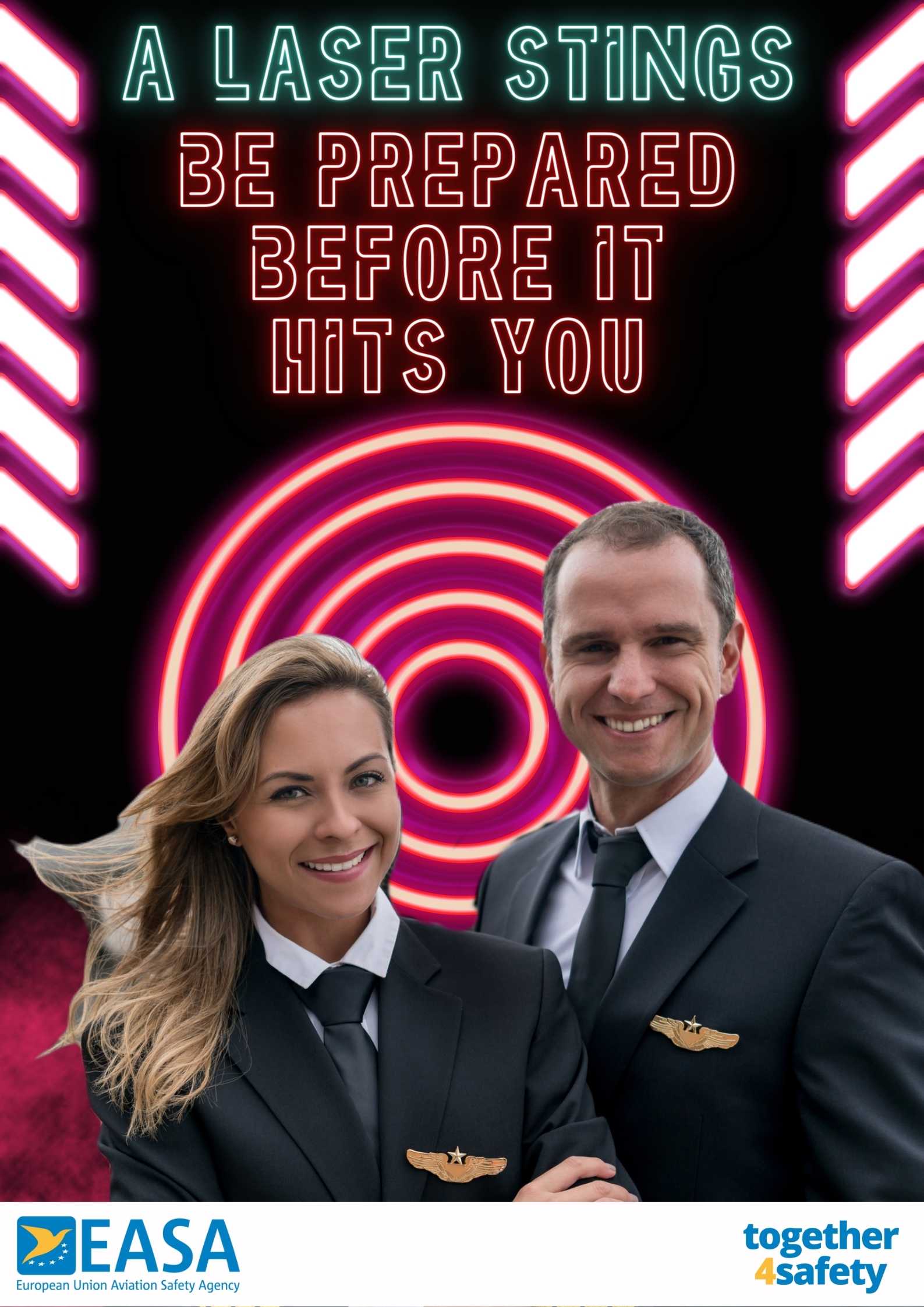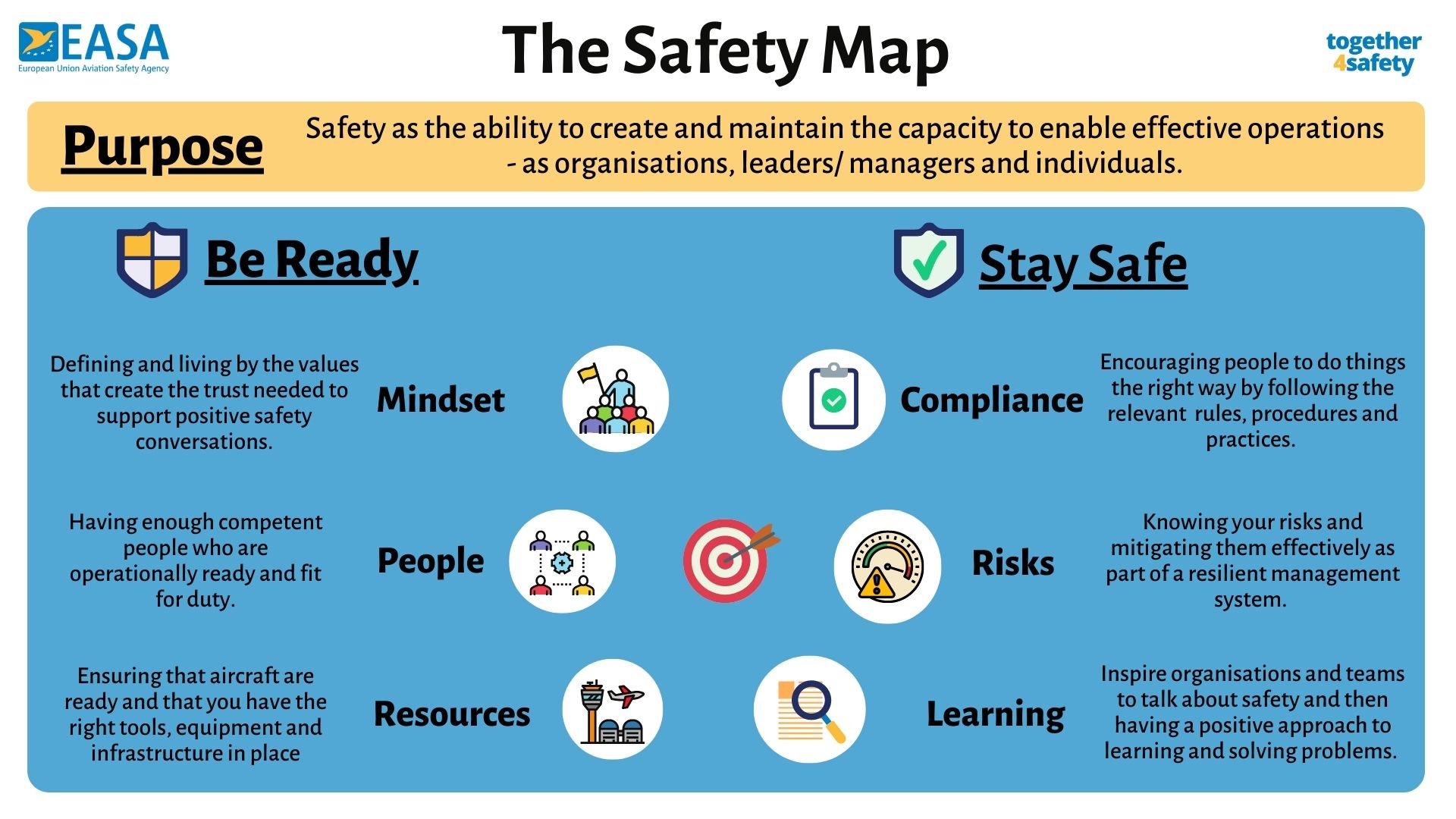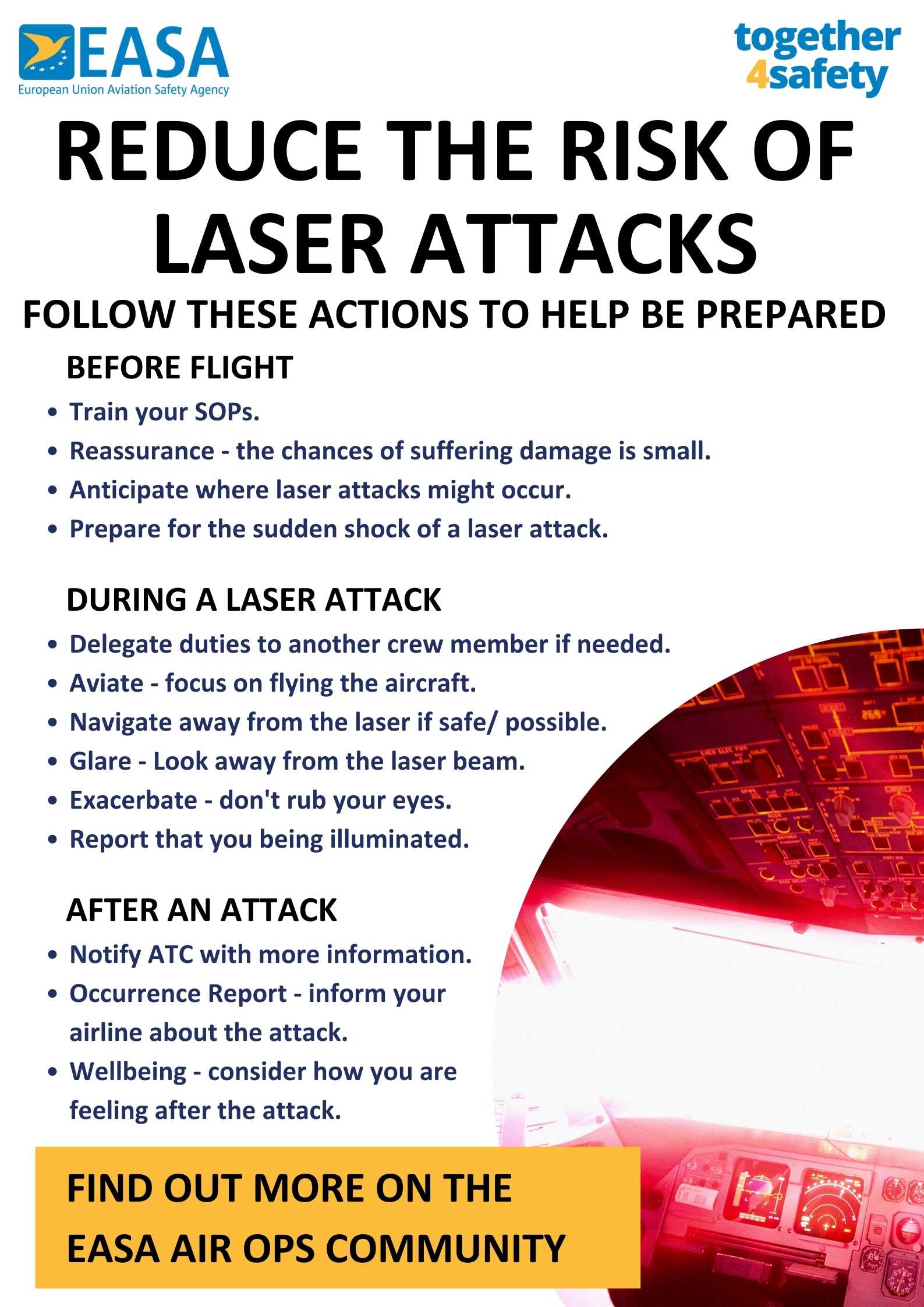Mitigating the Risk of Laser Attacks
As the nights get darker, the risk of laser attacks increases. It is probably not a surprise that most laser attacks take place when aircraft are over or near large centres of population. There have also been occurrences where ATC towers have been targeted by lasers.
Unfortunately, it is not so easy to prevent the attacks themselves. In some cases, many laser attacks have been identified as the work of a single person and it can be extremely challenging to identify and prosecute people who use lasers to attack aircraft. For that we must rely on the police and other authorities both to prosecute people who do this and then to publicise successful prosecutions to help deter others.
TLDR (Too Long Didn't Read?) - Follow these actions:
- Share this information with your networks on LinkedIn and in your organisation.
- Use the posters in your organisation - want your own version with your company logo? Drop us an email at safetypromotion@easa.europa.eu.
- Have discussions in your organisation about where your laser risks might be and what you would do during and after an attack.

What can we do as an aviation community?
There are still lots of things you do both within your organisation/ airline and as individuals. The Together4Safety Map of the Safety World shows the 6 key areas that support safe operations.

The main areas related to lasers are:
- Risks: Consider where in your route network the risk might be highest – consider flagging up high risk locations to crew so they can be extra vigilant.
- People: Consider providing pilots with specific training on handling laser attacks using our “Trap Danger Now” mnemonic in case you are stuck for ideas or material.
- Resources: Some airlines now have Laser Strike Eyewear for pilots to wear on approach to high risk locations, consider the need for this type of physical risk management.
- Learning: Encourage the reporting of all laser strikes and then share this information within your airline and also with your National Aviation Authority to help build up the bigger European and global data picture within the EASA Data4Safety project.
What a laser attack looks and feels like?
Laser attacks can appear very suddenly and are very bright and distracting to flight crew, who can suffer temporary loss of sight following an attack. However, the latest research suggests that permanent eye damage is unlikely due to the lower power levels of handheld lasers.
The key characteristics of a laser attack are:
- It is always very sudden.
- It is always very bright.
- It is distracting.
- The glare may obscure many or all of the flight instruments.
- Night vision will be disrupted.
- Even if the eyes are not directly illuminated there will be a temptation to look into the beam.
- For some time after the attack there is likely to be retinal ‘after images’ or even short lived blindness.
Advice and Mitigation Strategies
Advice on how flight crews and ATC personnel can be more prepared for laser attacks has been produced by a number of different countries and organisations. Additionally, the FAA and USAF have jointly produced a training video for pilots on the subject that is publicly available1. The key points of this advice can be easily remembered and advertised across the aviation community using the phrase TRAP DANGER NOW:

Before Flight - TRAP
- Train: At some point in a flying career a pilot’s aircraft or a controller’s tower will be targeted by a laser attack. Organisations should establish Laser Awareness Training and ensure that they have detailed SOPs for crews and controllers, which have a structured approach.
- Reassurance: Pilots and controllers should be reassured by the fact that the chances of suffering permanent eye damage from a laser attack are extremely low.
- Anticipate: When operating in a known or suspected laser environment, the non-flying pilot should be ready to take control of the aircraft if required. Consider having pilots wear “Laser Strike Eyewear” in high-risk locations.
- Prepare: Individuals should be prepared for the sudden shock that a laser attack can cause and be aware of the available advice on actions following an attack.
During and Immediately After an Attack - DANGER
- Delegate: If another crew member has avoided exposure, consider delegating tasks to the unexposed crew member if appropriate.
- Aviate: Check the configuration of the aircraft and, if available consider engaging the autopilot to maintain an established flight path. Consider executing a go-around.
- Navigate: If necessary, use the fuselage of the aircraft to block the laser beam by climbing or turning away from the laser.
- Glare: The glare of a laser is very distracting, look away from the laser beam if possible, shield your eyes and consider lower/ raising sub-blinds to reduce the effects. Consider turning up the cockpit lights to minimise the effects of further illumination.
- Exacerbate: Do not exacerbate the effects of a laser attack on the eyes – avoid rubbing of eyes to reduce the possibility of inducing further injury
- Report:
- Pilots: Inform Air Traffic Control of the situation as soon as possible and in particular if a decision has been made to diverge from the cleared flight path.
- Controllers: Advise aircraft under your control that a laser is illuminating you.
After an Attack - NOW
- Notify:
- Pilots: As soon as possible after the attack provide ATC with as much detail as possible concerning the event so that law enforcement organisations can take the appropriate actions. If possible, include a description of the location of the source of the laser beam, its direction and colour, and the length of exposure.
- Controllers: Notify other aircraft so that their crews can be prepared for an increased risk of further attacks.
- Occurrence Report: Complete your airline or organisations occurrence report to help inform others about the event.
- Well-Being: Ensure your personal well-being, if any eye problems continue after and attack, visit a doctor.
Use our posters to help promote awareness in your organisation. If you want to add logos to our posters just drop us an email at safetypromotion@easa.europa.eu.
I wrote this article for Air Rescue Mag, in 2013, about the means of protection for helicopter pilots. The full magazine can be ordered here: https://www.rettungsdienst-shop.de/produkt/airrescue-magazine-safety/
Please log in or sign up to comment.